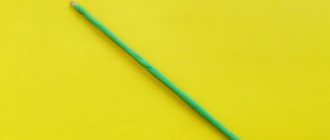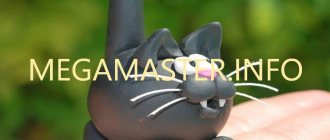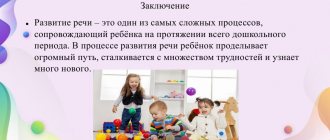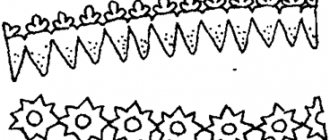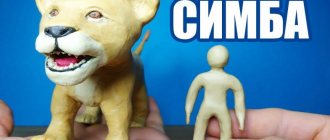Autumn motifs in the works of children
You can make working on a craft interesting for children if you take into account their capabilities. Therefore, I will try to show the works according to age level. I'll start with our work. For the tree, I rolled plasticine balls, and my son flattened it and drew a pattern on the leaves with a knife.
View this post on Instagram
Inspired by the bright fish, we made another picture of the autumn Dnieper from plasticine. We also printed out a coloring book and painted for about an hour. fingers trained. All our games and activities #daynotes_play #what to play with a child #what to do with a child #developmental #crafts with children #modeling from plasticine #modeling with children #drawing for children #painting from plasticinePublication from Elena Selivanova (@daynotes.ru) Oct 12, 2022 at 10:10 PDT
Vegetables fruits
3-year-old child can easily handle kneading plasticine. No matter how he does it, the resulting figurine can be recognized as a carrot or tomato, cucumber, pear, etc. What will the little one create? Ideas will appear on their own, looking at the color of the product and its shape. A couple of additional touches, and the naturalness of the design cannot be disputed!
Pumpkin
Carrot
Apple and pear
Basket with vegetables
Author of works on Instagram
Caterpillar
But a caterpillar is several circles gathered together and attached one after the other. To give strength to the structure, place all individual fragments on a toothpick. And, if you want the caterpillar to be flexible, put the balls on a needle and pull it along the thread. When all the parts are assembled, cut the thread at the needle itself, and embed its tip in plasticine.
You can, as this master class , make a caterpillar rainbow.
And don’t forget about the design of the face and the paws! By the way, here the circles are simply attached to each other. And this option is also suitable.
Painting-applique “Autumn in the forest”
Older children want to show their talent more fully. For example, preparatory group in a kindergarten can start making a real autumn meadow, where mushrooms grow and animals run around.
This is the kind of application we will make too.
- In the middle of the leaf we make a tree trunk. We select the shape and color. For example, birch can be white and slightly curved.
- Branches extend from the trunk.
- To make our tree more like a birch tree, we make “spots” by pressing holes (not through holes) with a small object.
- You can complement the picture with several black spots.
- We tear off the “leaves” from the yellow plasticine and glue them around the branches.
- It's autumn, which means there are also a lot of fallen leaves on the ground.
- Mushrooms grow around. They have a semicircular cap and short legs.
- There is a Christmas tree next to the birch tree. Glue a semicircle at the bottom. We divide this “skirt” into strips with a special knife. And so on for each top ball.
- There must be a hedgehog near the mushrooms. It is made like a droplet, only the nose is slightly turned up.
- Separate the part where the hedgehog has needles and draw many, many stripes.
- The hedgehog is already with the harvest. Glue a small fungus onto its needles.
- The bunny is standing by the Christmas tree. It has a head with long ears, a body, legs and a tail.
- Autumn heavy clouds and flying birds complete the picture.
- Author of the master class
Of course, if it is difficult for the baby to do something from this, you can skip this detail.
Painting "Autumn"
Such a picture can be done by children from 3 years old, however, if the child is assiduous. But 4-5 year olds can easily cope with this task.
Of course, it will be much easier if mom helps roll the balls.
Author on Instagram
More painting ideas from the Internet
Pictures enlarge by click
GCD for modeling on the theme “Autumn, fall, falling leaves” (1st junior group)
Municipal preschool educational institution
kindergarten No. 1 “Little Red Riding Hood”
Yaroslavl municipal district
Summary of direct educational activities on artistic and aesthetic development (modeling) in the first junior group
Theme: “Autumn, autumn, leaf fall”
Prepared by teacher: Kharitonova A.A.
2018
Target:
development of children's creative abilities.
Tasks:
Educational:
develop the ability to pinch off a small piece of plasticine from a larger piece; develop the ability to press a plucked piece onto paper.
Educational:
develop imagination, aesthetic perception, sensory perception.
Educational:
create the preconditions for the formation of love for the nature of the native land; develop the ability to work in a team; develop the ability to hear verbal instructions from the teacher.
Integration of educational areas:
cognitive development, social and communicative development, speech development, physical development.
Materials:
multi-colored leaves for decorating the group and for the game “Collect the leaves” (one red and one yellow for each child); a drawn tree without leaves on A4 format, one for each subgroup; plasticine of two colors (red and yellow); boards for modeling; wet wipes.
Preliminary work:
reading poems about autumn; examining the trees on the kindergarten site; comparison of maple, oak and birch leaves; looking at photographs and paintings of autumn landscapes.
GCD move
Guys, look how beautiful it is in our group, how many beautiful leaves there are around. The leaves, look, are red, yellow, gold. Who gave us such bright, beautiful leaves? (Children's answers)
Autumn, autumn, leaf fall!
Leaves are flying in the wind.
The mischievous wind swirls -
Red leaf, gold.
Guys, this leaf fall gave us such bright, beautiful leaves.
Physical education minute:
outdoor game
“Collect leaves”
Oh, what leaf fall! (The teacher throws up the leaves)
Let's collect red leaves. (Children perform)
Now let's collect the yellow leaves. (Children perform)
Well done boys.
Oh, and this tree didn't get any leaves! Let's give him some leaves.
(The teacher shows a drawn tree without leaves)
Invite the children to the table on which there is a piece of paper with a drawn tree. The teacher, explaining the techniques of plucking plasticine from a piece and smearing it onto paper, clearly shows the progress of the task.
Guys, look what a beautiful tree we have, how happy it is with its beautiful dress. Let's ask him, does he like his new dress? (The children ask, the teacher answers and thanks the children on behalf of the tree).
Plasticine and natural materials
Snail
For 4-year-old it is not difficult to cope with such a small structure.
- Roll out the plasticine into oblong droplets.
- On one edge of the “droplet”, which is thicker, use a needle or thin stick to draw a smile and eyes. This is the head. Make tendrils from small twigs on top of it.
- Place the blank on the leaf and glue it.
- Place a walnut or chestnut on top.
If such crafts are made in kindergarten , then it is advisable to prepare natural materials in advance. Clean it and show the little one what can be built from it.
Hedgehog
For a 5-year-old it will not be difficult to make such a design.
- Its main part is the plasticine body (wide part) and the head (narrow part) of the hedgehog.
- On the head we make a nose and eyes.
- We insert seed needles into the wide part.
Full information will be in the video .
Butterfly
Our baby is entering 1st grade , and it’s time to set more complex and interesting tasks for him. For example, this!
- You only need to sculpt 3 separate fragments and connect them. These parts resemble a snowman. The same principle: a small part, a larger part and a larger part.
- The main task is to lay out the leaves like a fan, or rather, two fans turned in different directions. These are butterfly wings.
- It would be correct to do this on a plasticine backing. Secure each individual leaf with plasticine to the previous ones.
- And place our 3 fragments on top in the middle.
At 6-7 years old, a child can easily cope with the choice of colors and shape of wings.
Modeling is a type of creativity that can be drawing, modeling, and design. The main thing is freedom and imagination.
Allow your little ones to fantasize and they will make wonderful crafts! And then you can show us off these works!
Be sure to take a look at the articles where we made flowers from leaves, paintings, and other crafts! Better yet, subscribe and then replenish your library with the most useful articles that will help your baby develop!
Summary of OOD on modeling in the second junior group “Ryabinka”
Abstract of OOD on modeling in the second junior group.
"Pock".
Target.
Teach: sculpt rowan berries from plasticine; separate small pieces from large ones in different ways (pinching, unscrewing, cutting with a knife); Roll pieces of plasticine into small balls.
Tasks.
To develop children's interest in work, teach how to form a bunch of rowan berries on a sheet of cardboard from rolled balls, and develop fine motor skills.
Material:
White cardboard with a drawn branch, plasticine, modeling board, knife, wet wipes (for wiping hands from plasticine).
OOD progress.
(Children sit on chairs opposite the teacher).
Educator.
(Includes audio recording of “Bird Voices”).
Guys, who sings this so beautifully?
Children.
Birds.
Educator.
That's right - it's the birds singing, but now it's winter outside and we can no longer hear their cheerful singing. Winter is a difficult time of year for birds, because it is cold and it is difficult to find food. Do you know what birds eat in winter?
(Children's answers).
Educator.
Well done! We also have a special tree on our site, the berries of which ripen in late autumn and hang on the tree almost all winter. Birds love to peck these berries.
(The teacher shows the children a rowan branch).
(Children's answers).
Educator.
That's right - these are rowan berries, look how bright they are, berry by berry, there are a lot of berries, they are collected in a bunch.
Guys, what color are rowan berries?
Children.
Red, orange.
Educator.
What shape are they?
Children.
Round.
Educator.
What size are they?
Children.
Small ones.
Educator.
Well done, guys! And who will tell me or show me how birds peck rowan berries?
(Children's displays and answers).
If you want, you and I will turn into birds, but for this you need to say magic words.
One, two, three, spin around,
Be sure to turn into a bird.
So you and I have become birds, stand in a circle and repeat after me.
Fizkul (author Logvina A.N.)
Birds jumped in the snow (Children jump into a circle from a circle)
They were looking for grains and berries. (Waving their arms and turning their heads)
Here is luck, a bunch of rowan berries, (They wave their arms and spin around in place)
We will be full today. (Children bend their heads forward,
imitating birds pecking on berries)
We refreshed ourselves, rested,
Now it's time for us to hit the road! (Waving their arms and running in a circle)
Educator.
Guys, it’s time for us to turn back into children, let’s say the magic words together.
One, two, three, spin around,
Turn into a child again.
I suggest you make a bunch of rowan berries for our wintering birds. Take a seat at the tables. Look (I show and comment) to make rowan berries we will need red plasticine. We pinch off (unscrew or cut off with a knife) a small piece from a large piece of plasticine, place it on the palm of my left hand, cover it with my right palm and roll out the plasticine in a circular motion. Now the berry is ready, I apply it to the branch and lightly press it with my index finger. But look (demonstration of a rowan branch) there are a lot of berries on the branch and they are located next to each other. Let's make a lot of berries so that we can get big, beautiful bunches of rowan berries. And we will give these bunches to the birds sitting at our creative stand.
(The children begin to work, the teacher prompts, guides, and helps the children as necessary).
Educator.
I see you have already finished making a bunch of rowan berries. (The teacher organizes an exhibition of children's works). Look what beautiful bunches of rowan berries you got. I am very glad that we were able to help wintering birds.
